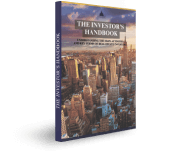Have you ever dreamed of having the freedom to retire early and enjoy life outside of the daily work grind? For many people, early retirement seems like an impossible pipe dream. But what if you could set yourself up to leave the workforce decades ahead of your peers by building passive income through real estate investing?
Our founder David Davidenko has already acquired all-time over 40 diverse real estate assets including multifamily, land development, car washes, built-to-rent, and mixed-use properties across various markets. With a total all-time investment of over 7,000 units and a portfolio valued at over $600MM, David has successfully executed investment strategies that provide quality, sustainable housing.
With the right real estate investment strategy, you can generate enough rental income and equity growth to reach financial freedom at a surprisingly young age. Whether your goal is to quit your job in your 30s or 40s, intelligent leveraging of rental property appreciation and cash flow acceleration can get you there.
In this guide, you’ll learn different approaches to retire early through hands-off real estate investing, including:
– Using leverage to maximize returns with a small down payment
– Focusing on multifamily properties for stable passive income
– Tailoring your investment strategy to your ideal retirement timeline
Follow these tips to set yourself up for the early retirement you’ve always wanted.
Take Advantage of Leverage and Appreciation to Fund Early Retirement
The key to funding an early retirement is generating enough passive income to cover your living expenses. With rental properties, you can leverage appreciated real estate equity and collected rents to provide that income.
Unlike stocks which require your own savings, real estate allows you to buy properties using mostly borrowed capital in the form of a mortgage. This stretching of your investment dollar is called leverage, and it allows your properties to earn income that ultimately exceeds your own contributions.
Use a Small Down Payment to Buy Your First Investment Property
To purchase your first rental property, you’ll only need enough savings for a 20-25% down payment. This allows you to keep the remaining 75-80% of the purchase price borrowed in a mortgage.
For example, if you purchase a $5,000,000 multifamily building, you could put just $100,000 down, raise $900,000 more, while borrowing $4,000,000. Yet as the property appreciates and earns rental income, you’ll profit on the full $5,000,000 value. In a sense, the bank is doing 75% of the work by financing most of the deal.
This concept of leveraging other people’s money is powerful when it comes to real estate investing for early retirement. By repeating the process of buying properties with a mortgage, you can build an income-generating portfolio on a modest personal investment.
Look for Markets with High Demand and Projected Home Price Growth
To accelerate your path to early retirement, you need your properties to appreciate in value. That’s why it’s important to purchase rentals in markets positioned for strong home price growth.
Look for cities and specific neighborhoods that have:
– Increasing population and job growth
– New infrastructure projects on the way
– Strict zoning laws that limit new housing supply
These factors fuel housing demand, bidding wars on properties, and ultimately price appreciation over time. Working with a savvy real estate agent is key to identifying growth markets with upside potential.
In addition, be wary of buying in markets at their peak. Research historical home prices to avoid making purchases when values may be plateauing or on the decline. Time your investments into rising markets to maximize equity gains.
Focus on Multifamily Properties for Stable, Hands-Off Income
When it comes to funding an early retirement, relying on rental income from single-family homes can be risky and require extensive hands-on management. A better approach is to invest in small apartment buildings and other multifamily properties.
The unique benefits of multifamily real estate investing include:
Consistent cash flow – Multiple units under one roof means continual rental income even if one unit is vacant. This provides stable passive revenue for your early retirement.
Pool of tenants – Unlike single-family rental owners who rely on one tenant, multifamily owners have a pool of renters. If one tenant leaves, you still have cash flow from the rest.
Economies of scale – Maintenance costs can be spread across multiple units, and multifamily buildings come with shared infrastructure already in place. This results in lower operating expenses and higher returns.
Property management – Professional property managers oversee leasing, maintenance, and operations of the entire building for a percentage fee. This allows for a hands-off investment.
Hire a Property Manager to Handle Day-to-Day Operations
A benefit of multifamily real estate investing is being able to take a hands-off approach by hiring a property management company. These professionals handle tasks like:
– Marketing vacant units and screening tenant applications
– Collecting rent payments each month
– Coordinating any maintenance issues or repairs
– Staying in compliance with landlord-tenant laws
Quality property managers have established systems and contractors to effectively operate your building. They serve as a buffer between you and tenants, so you can simply collect your monthly share of passive income. Expect to pay 3% of collected rents as a property management fee.
Spread Risk Across Multiple Units and Tenants
Multifamily investments spread risk in two key ways compared to owning single-family rentals:
Vacancy risk – If one tenant moves out, you still have rental income from occupied units. Whereas a single-family vacancy represents a 100% loss of rent until leased again.
Tenant risk – With 20+ units, the chances of all tenants moving out at once or failing to pay rent is extremely low. But this risk is greater with just one tenant.
By diversifying across multiple rental units and tenants, multifamily real estate provides protection against dips in occupancy or rent collections. This results in more predictable passive income to fund your early retirement dreams.
Determine the Right Markets and Strategy Based on Your Retirement Timeline
The real estate investing strategy you deploy should directly align with your ideal retirement age. More aggressive approaches allow for earlier retirement, while slower accumulation of properties sets you up for later financial independence.
Acquire Small, Local Rentals to Retire in Your 50s
If your goal is to retire in your 50s, start by purchasing an owner-occupied multifamily property. This allows you to house hack by living in one unit while renting the others. Funnel the rental income directly towards paying off the mortgage.
Once you build enough equity, use it to make a down payment on your next small multifamily acquisition. Continue steadily buying modest apartment buildings or single-family rentals in your current city or state. Over 1-2 decades, this creates sufficient passive income to retire by 50-55 potentially.
Invest Heavily in Out of State Rentals to Retire Earlier
For those with sights set on retiring in their 40s or 50s, a more aggressive investment strategy is needed. This means immediately acquiring rental properties out of state, where cash flow is maximized.
The key is purchasing turnkey rentals that are newly renovated in landlord-friendly cities across the Midwest or South. A local property management company takes care of everything, while you simply receive monthly passive income.
By deploying more capital upfront through crowdfunded real estate investments or tapping home equity lines, you can acquire enough out of state rentals to retire decades earlier. Just be prepared to manage the properties remotely.
Start Investing in Real Estate to Unlock Your Early Retirement Dreams
The road to early retirement through rental property investing begins with your first purchase. By leveraging low down payments, hiring property managers, and benefiting from appreciation, your initial investments can snowball into a thriving portfolio.
Here are some tips to start:
– Speak with a loan officer to get prequalified for rental property financing
– Research top markets for cash flow and appreciation potential
– Connect with a real estate agent experienced in multifamily deals
– Identify property management companies to handle day-to-day oversight
– Consult a tax professional to optimize depreciation benefits
With the right goals and preparation, you can assemble a portfolio that provides enough passive income to retire comfortably in your 30s, 40s, or 50s. The key is taking consistent action today to build rental income for tomorrow. Years from now, you’ll be thankful you made the efforts to invest in real estate and unlock the dream of early retirement. So acquire that first property and set the wheels in motion to financial freedom!
Interested in multifamily real estate investing? Our experienced team is here to help. From market research to identifying the best opportunities, we guide you through the process. Subscribe to our YouTube channel for informative videos and expert discussions, and follow us on Instagram for exclusive content. Explore our comprehensive Udemy course for detailed insights and strategies. Ready to elevate your investment journey? Contact us now to schedule a consultation and achieve your financial goals in real estate.
*This content is for informational purposes only and is not intended as financial or legal advice. Please consult with a professional advisor before making any investment decisions.



























